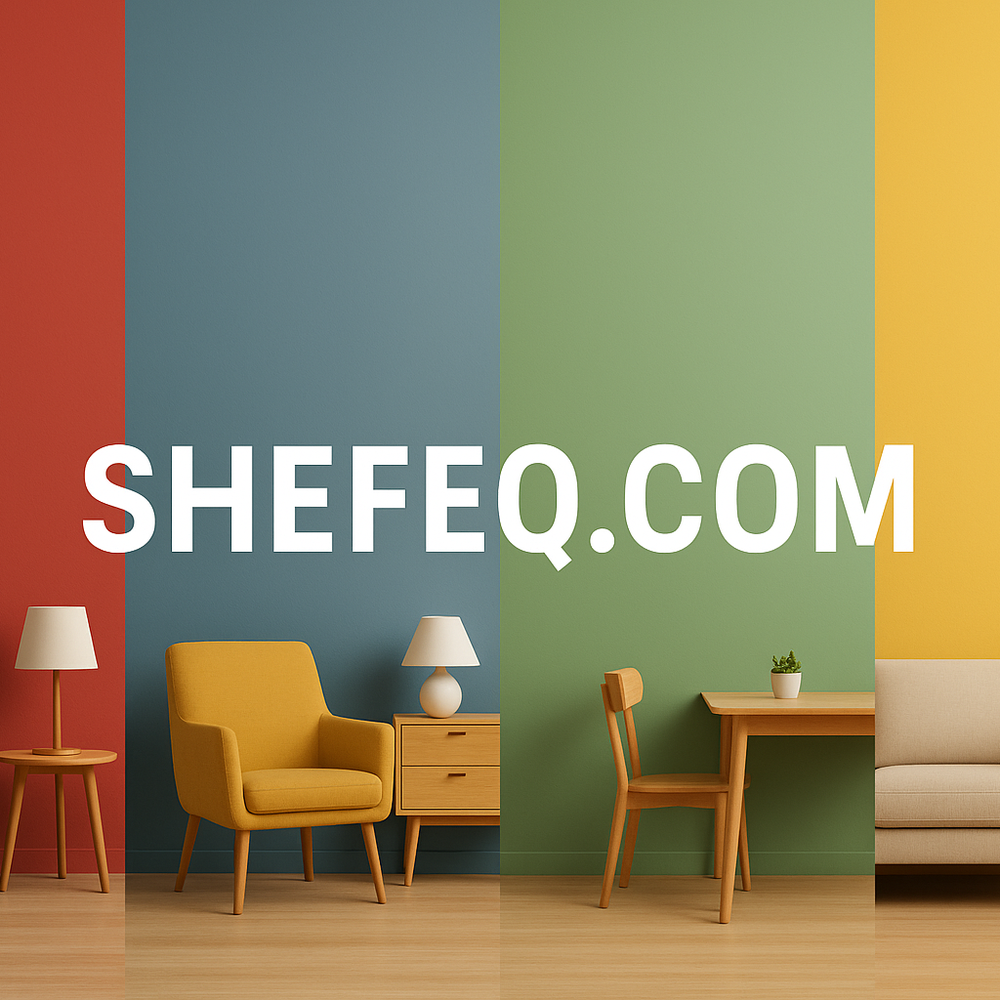Introduction
Look at the walls of your home, office, or bedroom. Do you see them? They’re not just paint or decoration – they are a reflection of your inner world, an invisible psychological force that regulates your daily mood. Colors don’t speak, but they make you feel. In this article, we will explore in depth the psychological impact of wall colors, the reasons behind color choices, the emotional states different colors evoke, and most importantly – how choosing the right color for your home can transform your life.
Section I – Color Psychology: The Language of Invisible Emotions
Color psychology is the study of how visual stimuli create emotional reactions in the human brain and psyche. Colors are not just visually pleasing; they also affect our mood, energy, sleep cycle, and even decision-making.
-
Red increases heart rate and evokes feelings of passion and movement.
-
Blue creates a sense of calm and relaxation, lowering blood pressure.
-
Green symbolizes connection to nature and balance.
-
Yellow brings energy, sunshine, and joy.
-
Black is associated with power, mystery, and deep thinking.
Applying these colors to your walls can bring these emotions into your daily life – even without realizing it.
Section II – What Do Your Interior Colors Say About You?
The colors of your home’s walls say a lot about your personality. For example:
-
People who prefer soft pastel tones usually seek calm and harmony.
-
Those who choose bright and bold colors are often creative and full of life.
-
Those drawn to dark and deep shades may be introspective, thoughtful, and emotionally deep.
Choosing different colors based on a room’s function can directly influence your behavior and mood within that space.
Section III – Effects of Different Colors in Rooms
Bedroom – Comfort and Rest
The bedroom is primarily for rest and psychological renewal. Therefore:
-
Blue, lavender, and soft gray are ideal. These tones reduce cortisol (the stress hormone) in the body.
-
Avoid stimulating colors like red and orange, which can cause insomnia and tension.
Kitchen – Energy and Appetite
-
Colors like yellow, orange, and green create positive energy and stimulate appetite.
-
Black and dark gray are not recommended, as they can suppress appetite and deplete energy.
Living Room – Social Connection and Comfort
-
Beige, cream, soft green, and earth tones are great for social spaces.
-
These colors help guests feel at ease and promote warm family interactions.
Children’s Room – Imagination and Calmness
-
Green and blue help create a balanced and calm atmosphere for children.
-
Overly bright and stimulating colors may lead to hyperactivity and distractibility.
Section IV – Colors and Mood: Scientific Insights
-
A 2010 study by the British Psychological Society found that painting office walls blue increased productivity by 15%.
-
Highly saturated and bright yellow tones were observed to cause irritation and restlessness over time.
-
Light green is considered one of the most balanced colors – it is both calming and energizing.
Section V – What to Consider When Choosing a Color
Choosing a color is not just an aesthetic decision – it’s a psychological one. Ask yourself the following:
-
What is the room’s purpose?
-
Is there plenty of natural light, or very little?
-
Is the space small or large?
-
What emotional state do I want to feel in this room?
In small rooms, light tones can make the space feel larger. On the contrary, in large and empty spaces, warm earthy tones can create coziness.
Section VI – The Dialogue of Color and Soul: A Philosophical Perspective
Sometimes, we don’t choose a color – the color chooses us. A person’s psychological state is often reflected in their color preferences. Someone in depression may instinctively turn to dark gray or black. But what the soul really needs might be the opposite – light, color, movement.
Walls are the silent voice of the soul. Choosing the color they speak in is our decision. Sometimes one color means a whole new beginning.
Section VII – Trends and Tastes: Popular Colors of 2025
The trending interior colors of 2025 include:
-
Natural beige and linen tones – for those who seek minimalism and tranquility.
-
Olive green – a modern choice that harmonizes with nature.
-
Misty blue – ideal for comfort and deep thinking.
-
Terracotta and brick tones – evoke warmth, grounding, and strong energy.
These trends are not just about style, but also about aligning your inner energy with harmony.
Section VIII – Conclusion and Tips
Colors are everywhere – in nature, in art, and on the walls of our homes. They speak to us silently: sometimes calming, sometimes motivating, sometimes warning.
If you want to listen to your soul and paint your walls with the colors it needs, the first step is to understand your emotions. Remember:
“Colors are music seen with the eyes, and the wall is their stage.”
Reader Questions and Comment Section
-
What color is your room, and how does it affect you?
-
If your walls could speak, what would they say to you?
-
Which color calms you, and which one would you never choose?
Share your thoughts and experiences with us in the comments – let’s journey together into the magic of colors with the Shefeq.com family.

